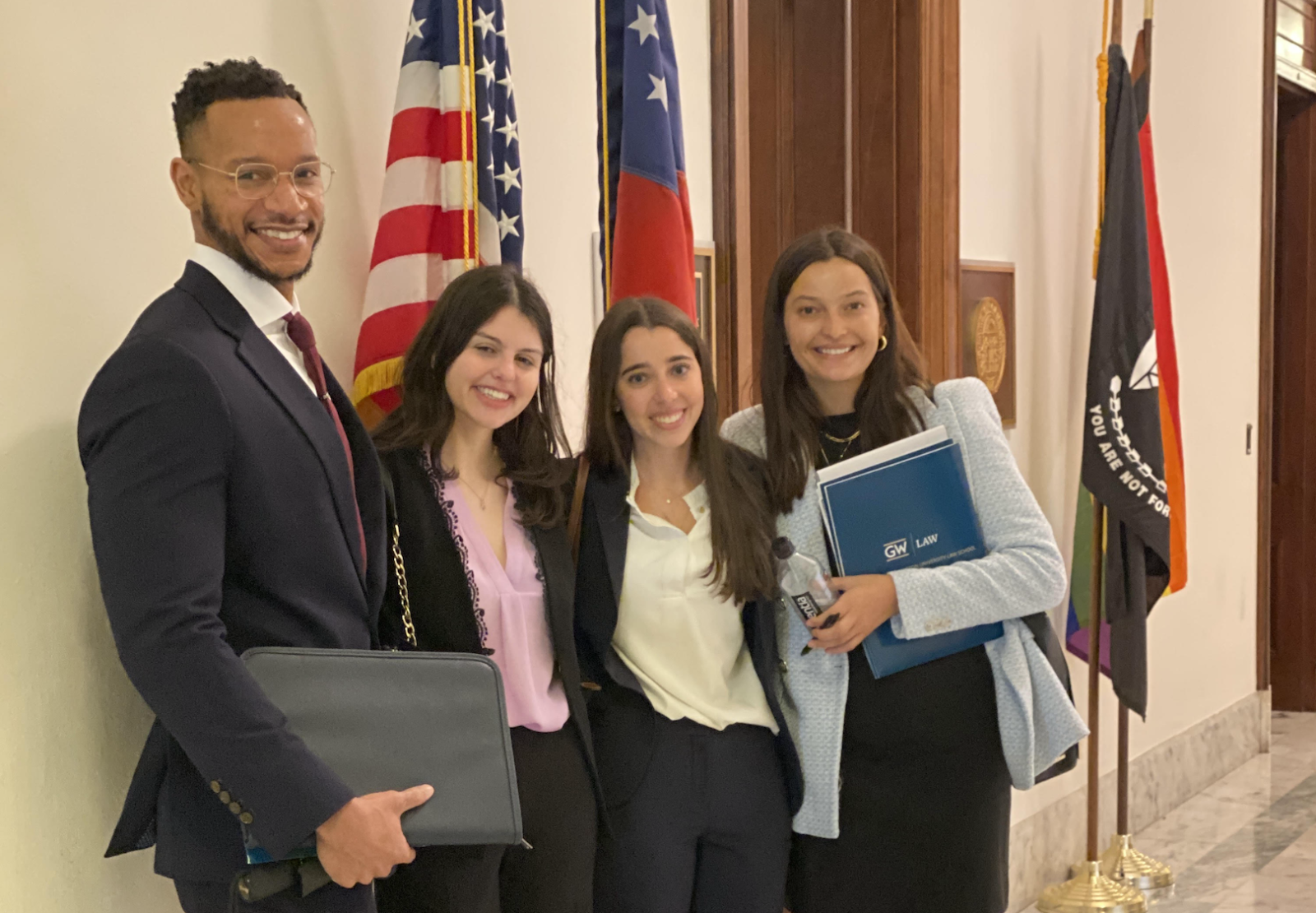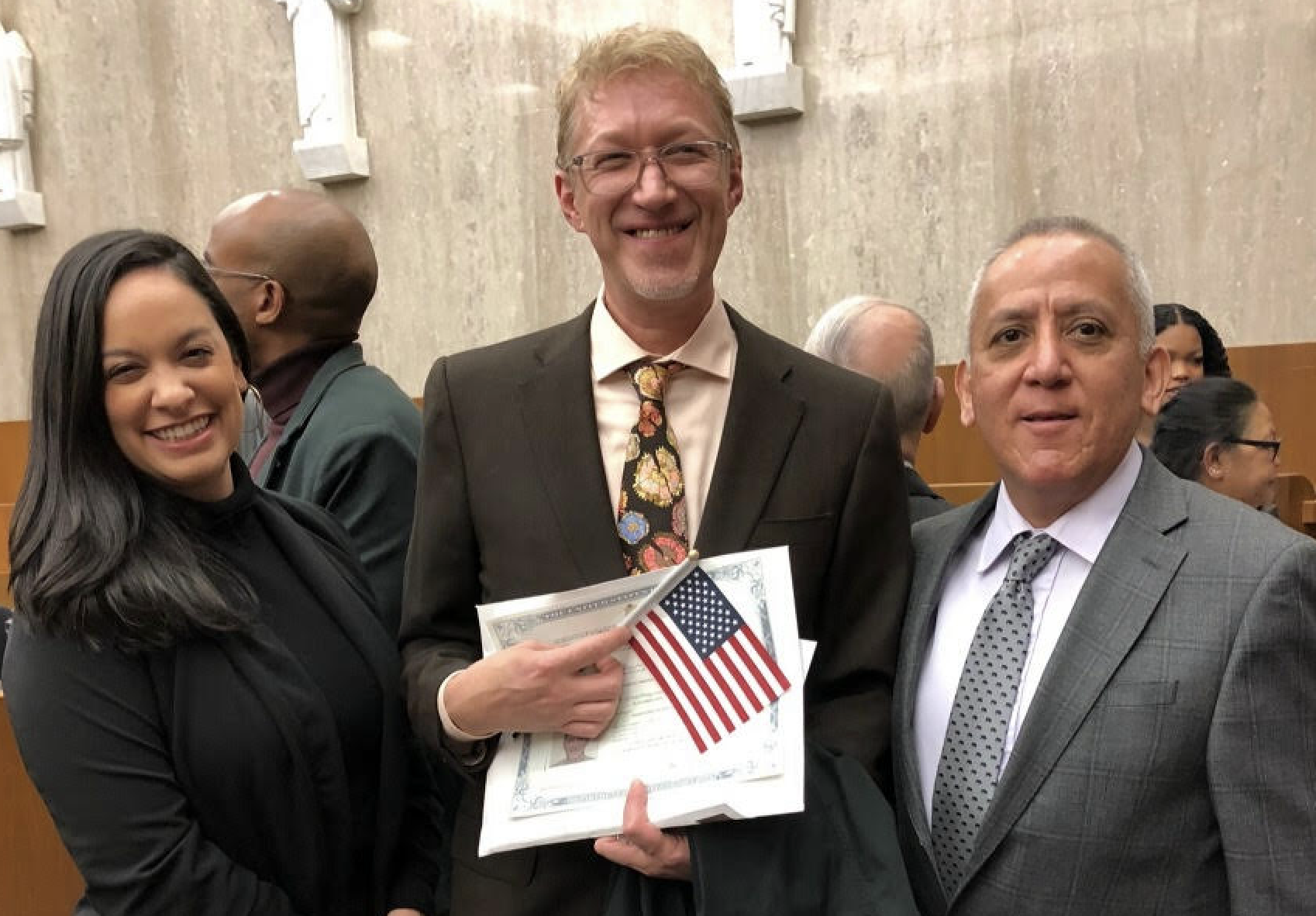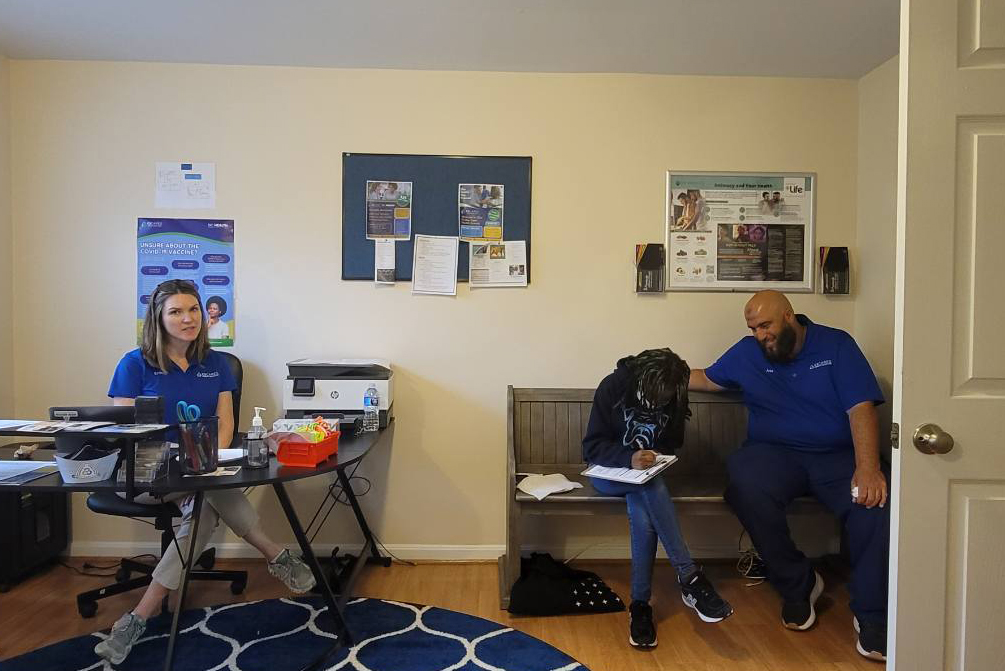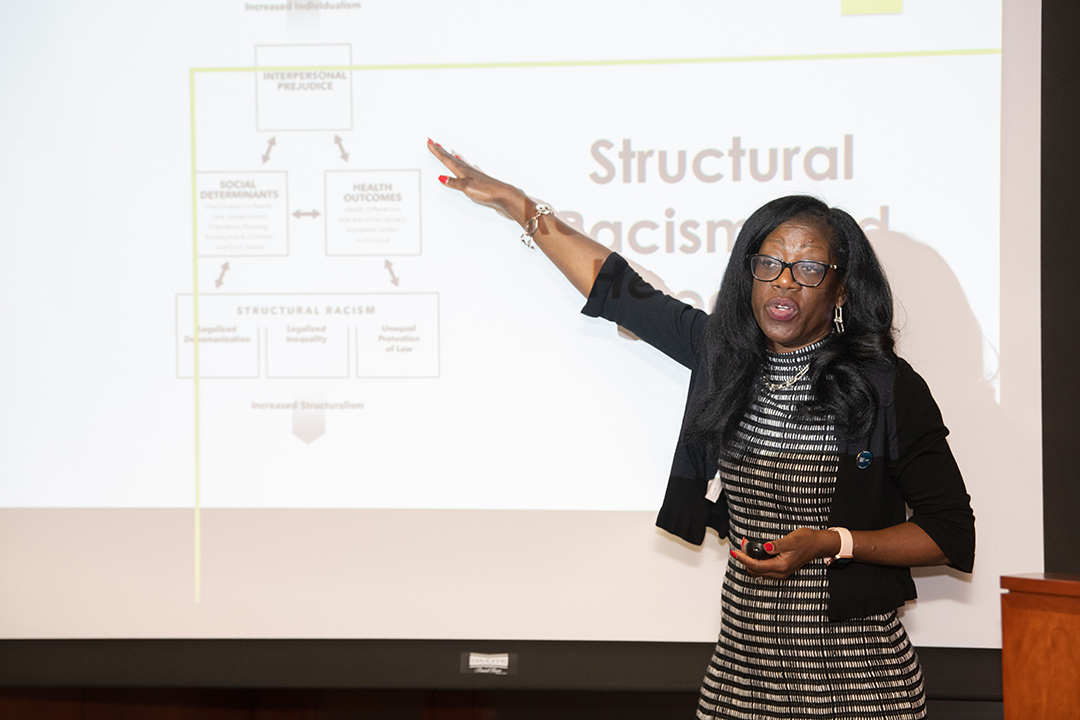Imagine that you are a single mother and your roof leaks, or there is a rodent infestation in your home, and you report it to your landlord—but instead of fixing the problem, he files to evict you. Scenarios like these are not imaginary, according to Emily A. Benfer, associate professor of clinical law and director of the Health Equity Policy and Advocacy Clinic. In fact, they are distressingly common.
The eviction system in America, Benfer said, is structured in a way that causes disproportionate harms to historically marginalized groups, particularly Black women and families with children, who are evicted at the highest rates. Even worse, the system is directly associated with lasting harms to the health of those who are caught up in its net.
“Who do we evict? Overwhelmingly, the answer is children,” Benfer said. “Across the country, every one out of three low-income children will be evicted by the time they are 15. Eviction is particularly devastating to children, resulting in emotional trauma, developmental delay, lead poisoning, food insecurity, and decreased life expectancy.”
According to the Eviction Lab at Princeton University, where Benfer is a Research Collaborator, “In a typical year, 7.6 million people—40 percent of whom are children—live in households that receive one or more eviction filings and are at risk of housing loss.”
The clinic Benfer directs at GW Law is a medical-legal partnership with Bread for the City, a local provider of social services. Its health care providers, which include GW medical residents, refer clients with housing issues leading to poor health outcomes to the clinic, which assigns law students to represent them. GW Law’s 19 clinics operate as a public interest law firm that provides intensive individualized skills-based teaching to nearly 300 students a year. These students represent individual and organization clients and engage in a wide range of local and federal policy work.
If eviction meant just having to find a new place to live on short notice, with homelessness as the alternative, it would be bad enough. But seen through the lens of health justice, eviction is even more harmful, Benfer said. It strips people from access to safe and decent housing, leading to increased exposure to chipping lead paint and other environmental hazards such as leaks, mold and infestations, among other issues, all of which have negative health consequences.
For adults, Benfer said, eviction “disrupts employment, education, access to services and results in diminished mental and physical health, among other harms. If a woman is pregnant when she’s evicted, the child is born with a lower birth weight or prematurely. Children’s lives are thwarted before they even begin due to the harms of eviction itself.”
In a recent study, Benfer’s colleagues at the Eviction Lab determined that eviction is associated with mortality. As Benfer put it, “Eviction is literally killing people.”
Housing relates to health in several ways, beginning with the physical conditions of the individual housing unit. The unaffordability of safe housing is also an issue, and so are the stability of housing situations and the safety of the larger environment.
“You see a lot of low-income children with asthma in D.C. caused by exposure to mold and infestations,” Benfer said. “The highest rate of emergency room visits for asthma occurred in the three zip codes that make up Southeast D.C., where there’s a high incidence of substandard conditions and infestations in rental housing. Those ER visits are entirely preventable.”
The clients represented by students in Benfer’s GW Law clinic are all from D.C., but students working with the clinic also engage in policy advocacy at both the local and federal level. Currently, clinic students are working on a federal bill to prevent lead poisoning in the federal Housing Choice Voucher program, a form of tenant-based rental assistance. Their efforts resulted in the introduction of a bi-partisan bill this legislative session.
Eviction’s downward spiral—and how to reverse it
In “Housing is Health: Prioritizing Health Justice and Equity in the U.S. Eviction System”, her article recently published in the Yale Journal of Health Policy, Law, and Ethics, Benfer shows how the U.S. eviction system is a structural determinant of inequity, particularly health inequity.
In her article, Benfer shows evidence from the public health and social science fields demonstrating the links between eviction and negative health outcomes for different populations. Multiple aspects of the eviction system function as structural determinants of health inequity, she said. An example would be extractive management strategies used by landlords who maintain rental properties in disrepair and then evict tenants who report problems rather than fixing them because eviction is easier and cheaper.
Serial eviction filing is a strategy used by some landlords who file eviction notices against a tenant repeatedly, but withdraw them. This weaponizing of the eviction system, Benfer said, is used to remind tenants that landlords have the power to control their behavior.
“It’s very punitive,” Benfer said. “It’s a reminder that if you’re a minute late paying the rent, the landlord has the ability to take the roof away from over your head.” And most tenants know that if they get an eviction on their record, that ends up affecting their long-term livelihood and well-being.
Eviction is a “Scarlet E,” Benfer said, “that precludes people from safe and decent housing and pushes them to the outskirts of the rental market, into drastically under-resourced communities. Typically, this means lower-performing school systems, neighborhoods with higher crime, fewer employment opportunities, inadequate or nonexistent public transportation and almost always substandard conditions in the housing.”
These dire consequences can persuade tenants not to report problems due to fears of retaliation in the form of an eviction. When tenants go to court to face eviction, cases are typically decided in between 90 seconds and three minutes. In a matter of seconds before a judge, tenants can find themselves without a home.
Benfer applies the health justice framework that she developed to propose solutions to this unjust state of affairs. She advocates for numerous protective and corrective policies and practices that work to correct the system, such as codifying in law a tenant’s right to counsel.
In her work as principal investigator on a study funded by the Robert Wood Johnson Foundation, Benfer conducted qualitative interviews, legal mapping and policy surveillance. One of the clear solutions that emerged was that when tenants have the right to an attorney, judges stop rubber-stamping evictions.
“The system has been designed by and for landlords,” Benfer said. “Traditionally, tenants facing eviction haven’t had counsel. National studies suggest that 83% of landlords have attorneys while only 3% of tenants do. This initial imbalance of justice becomes a conveyor belt of injustice.”
The data showing this imbalance of justice is a clear call to action, according to Benfer.
“It is not acceptable in the United States that we have a system in place that is perpetuating severe harm, especially when we could have a different outcome altogether if we prioritize health equity and social justice.”
Silver lining in a pandemic cloud
Eviction filings dropped to historic lows during the first wave of the COVID pandemic. Benfer took a leave of absence from teaching during the pandemic to serve as a Senior Policy Advisor to the White House and the American Rescue Plan Implementation Team, supporting the delivery of emergency rental assistance and eviction diversion measures. Many interventions were put in place to slow the eviction process, to ensure that landlords and tenants alike could survive in the frightening months of the pandemic.
“And it worked,” Benfer said. “Because we put those protections in place, we dropped eviction filings dramatically, and we kept them to the lowest numbers in history for two years. We know how to stop eviction. We demonstrated that we can do it.”
The supportive measures put in place by the White House team dramatically changed the eviction landscape—but eviction rates have since risen to pre-pandemic levels and even higher in some jurisdictions. And there is no one silver bullet, Benfer said. Various measures are needed to address the entrenched power imbalance in the eviction system. Such measures include codifying a tenant’s right to counsel in eviction cases, which dramatically lowers eviction rates; pre-filing diversion programs; and just-cause eviction standards. In her Yale article, Benfer emphasizes the importance of community-driven structural change and addressing governance, budgets, enforcement processes, and detrimental laws and policies that perpetuate the harm.
Despite all the injustice, Benfer expresses optimism that the system can be reformed.
“Ultimately, for millions of Black people and other historically marginalized groups, the U.S. eviction system is operating as a major driver of health inequity,” she said.
“The system is undermining and thwarting any semblance of justice and toppling pillars of resiliency that are fundamental to individual and community ability to thrive. This should serve as a catalyst to prioritize health justice in the eviction system as a major public health goal. Everyone in our country should have uninhibited access to safe, decent, affordable and stable housing free of the threat of eviction. It is this America, a place where housing and health equity are ensured, that we must all demand.”








